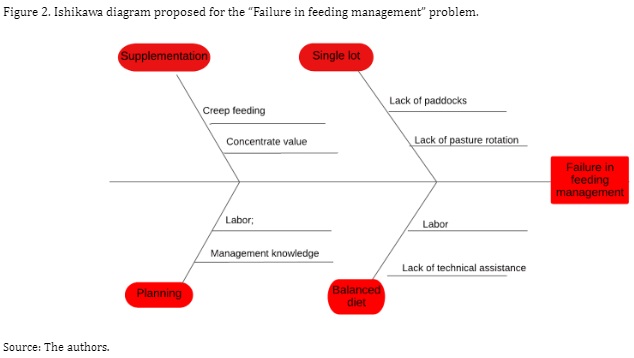Applicability of management tools in a family dairy farm: a case study
DOI:
https://doi.org/10.21708/avb.2023.17.1.11437Resumo
This study aimed to describe the application of the management tool GUT matrix in a family dairy farm in the state of Acre to identify the main weaknesses and propose adequate tools to allow better management of the causes of the three biggest identified problems. This is a case study carried out on a single property located in the municipality of Rio Branco - Acre in May 2022. Information was collected by applying a semi-structured form with 267 questions. The GUT matrix allowed ranking the three main weaknesses of the property, namely: “lack of zootechnical bookkeeping,” “long calving interval,” and “failure in feeding management.” The management tools proposed to the producer, seeking to guide and organize the activities of the property, consisted of 5W2H and Ishikawa diagram.
Downloads

Downloads
Publicado
Edição
Seção
Licença
Copyright (c) 2023 Acta Veterinaria Brasilica

Este trabalho está licenciado sob uma licença Creative Commons Attribution 4.0 International License.
Autores que publicam na Acta Veterinaria Brasilica concordam com os seguintes termos: a) Autores mantém os direitos autorais e concedem à revista o direito de primeira publicação, com o trabalho simultaneamente licenciado sob a Licença Creative Commons Attribution que permite o compartilhamento do trabalho com reconhecimento da autoria e publicação inicial nesta revista. b) Autores têm autorização para assumir contratos adicionais separadamente, para distribuição não-exclusiva da versão do trabalho publicada nesta revista (ex.: publicar em repositório institucional ou como capítulo de livro), com reconhecimento de autoria e publicação inicial nesta revista. c) Autores têm permissão e são estimulados a publicar e distribuir seu trabalho online (ex.: em repositórios institucionais ou na sua página pessoal) a qualquer ponto antes ou durante o processo editorial, já que isso pode gerar alterações produtivas, bem como aumentar o impacto e a citação do trabalho publicado (Veja O Efeito do Acesso Livre).


 Esta obra está licenciada com uma Licença
Esta obra está licenciada com uma Licença 